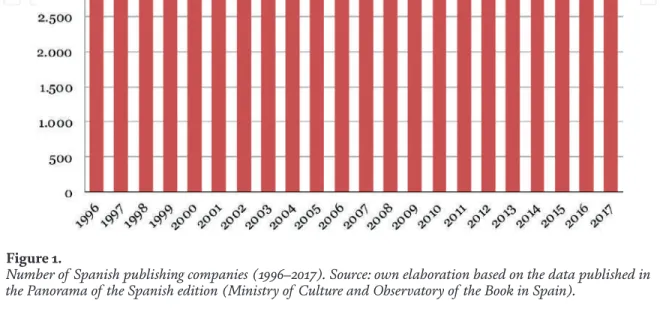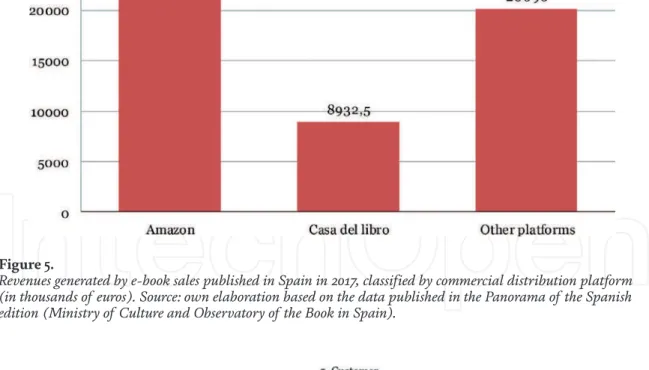Against the previous literature on this topic, such dynamic capabilities refer to the second, third and fourth level of capabilities of Collis [37], based on the creation, modification and/or expansion of based resources, as well as on "the ability to develop the ability to develop the ability to innovate faster" (p. 148). For example, in 2017, Boeing launched the "Boeing HorizonX India Innovation Challenge 1.0" project, which consists of launching, through an open call, challenges to Indian IT startups.
Conclusions and managerial implications
According to the vision of senior executives and managers, digital transformation is based on cultural transformation, and they are investing in global talent and transforming traditional IT workspaces into modern environments. Incumbent Entry into New Markets: The Role of Experience and Managerial Choice in Creating Dynamic Capabilities.
TOP 1%
Introduction
However, SW context is not always characterized by off-site work, as it is considered a blended approach that also exists alongside the traditional, face-to-face, way of working. We first describe the concept of Digital Working (and more specifically, of SW) and the main variables related to its implementation, namely advanced information technologies (AITs), normative issues and cultural variables.
Smart working: a flexible approach to work
- Macro-level change: technological and institutional issues
- Micro-level change: organizational features
Instead, we claim a more contextual ambidextrous approach in which rules and autonomy as well as control and trust alternate according to the specific way of working and contingencies. According to the concept of empowerment, defined as a "degree to which leaders enhance autonomy, control, self-management and trust in their teams" [48], p.
A framework for flexible working: contextual ambidextrous leadership
- Quadrant I
- Quadrant II
- Quadrant III
- Quadrant IV
Quadrant II includes directive leadership styles, typical of large and bureaucratic companies, which are characterized by the implementation of routines, procedures, and standardized behavior. Conversely, when workers switch to an off-the-job mode, both leaders and followers should adapt their approach to an empowering style based on autonomy, trust and results orientation, supported by collaborative and mobile technologies, so that they act as digital workers, in a more flexible way, typical of Quadrant III.
Theoretical and practical implications
Therefore, within the context of smart work, there is a different perspective that changes from how to sustain the transition from "directive" to "empowering" to an approach that focuses on how to maintain both "directive and empowered" styles. By analyzing the IV quadrant of our framework, we highlight the interesting idea of an intertwined process of change, in which complexity rather than linearity drives the transition to a two-sided approach.
Conclusion
This focuses on identifying the career path for the advancement of managers and employees. Leadership in the digital age deals with the consequences of digitization for management conceptualization and practice in the virtual space.
The context of the pre-digital leadership era
To address these and related issues in the digital age, this chapter offers alternative approaches and a conceptual framework to bridge the gap of discontinuity between pre-digital and digital leader-followership that arose as a consequence of contextual differences between physical and virtual spaces for leadership, sociocultural and value changes among leaders and followers, theoretical shifts in leadership education, and changes in leadership education.
Socio-cultural and value changes
The Digital Earth (DE) initiative, launched by Vice President Al Gore in 1998, and rapid digitization gave birth to a new generation of global citizens, often referred to as digital natives, who tend to think and act digitally in a different way than previous generations, referred to as digital immigrants [24]. Millennials and Zers, who were either born during or grew up after the digital revolution, are considered digital natives [25].
Theoretical shift in leadership studies
The digital revolution and advances in digital technology have enabled environmentalists to learn and process vast amounts of geospatial data about planet Earth [22]. In order for an interactive process that follows leadership ("new wine") to occur in today's digital age, a new organizational mindset and design ("new wineskins") seems necessary, because the environmentally aware and responsible digital generation ("new wines") cannot fully function in corporate hierarchical structures with a leader-centered leadership mindset ("old wines").
Leadership education change
Furthermore, role identity theories and research suggest that multiple or interchangeable role identities can be beneficial for positional leaders, who lead under constant demands and pressures, to be willing to share leadership with followers and adopt leader-follower multiple identities.
The context of the digital era
Consequently, the worldview and communication gap between these generations has created new intergenerational tensions and challenges in the current digital age. The above seven contextual factors not only changed power dynamics between leaders and followers, but also disrupted the "business as usual" mindset in organizations by creating a discontinuity gap between traditional and contemporary leadership understanding and practice.
Literature on digital leadership
- Leadership in the digital age
- Digital leadership
- E-leadership
- Cyber leadership
To understand leadership in the digital age, it is important to note the effect of digitization on leadership in the virtual space. Narbonne defines digital leadership as "the human quality of leadership exercised with digital means in the virtual world" [53].
Alternative approaches to digital leader-followership
- Followership
- Leader-follower multi-role identities
- Process-based leadership
- Distributed leadership
- Shared leadership
- Collective leadership
- Adaptive leadership
In today's information and digital age, the single identity ("I am a leader" or "I am a follower") from the era of industrial leadership has shifted to a multi-role identity paradigm that follows the leader ("I act as both a leader and a follower"). This approach is an old paradigm of the boomer generation that does not match the demands of the digital age.
A conceptual framework for the digital leader-followership
- Application of LFT model for digital leader-followership
What are the personal and group incentives for the applicability of the LFT approach in the digital age. The LFT approach may well serve as a bridging model between the traditional and new management paradigms in the digital age.
Addressing leadership problems in the digital age
Conclusion
- Limitations
- Implications for future research
3] expressed this by emphasizing complexity as a result of "interrelationship, interaction and interconnection of elements within the system". The theoretical model presented in this article uses naturally occurring team functions as a structure (TELDE) for CAS.
Complexity theory
- Complexity theory primary components .1 Interactions
Structural complexity related to the number and variety of the elements while dynamic complexity (behavior) related to the interactions between the systems parts or elements [25]. The function of self-organization is a process [33], one in which the components of the system communicate with each other and cooperate in their coordinated efforts.
Complex adaptive systems (CAS)
- Definitions of CAS
- Characteristics of CAS
Cohesive behavior in the system that arises from competition and cooperation among the agents themselves. Exploitation of the many niches in the system by agents adapted to fill those niches [33].
Complex adaptive team system (CATS)
Changes inside and outside the system affect all other parts of the system in unpredictable (non-linear) ways. The size of the system and its subunits (N), as identified by Hunt et al.
The team emergence leadership development and evaluation (TELDE) model
Here, promoting and guiding CAS is a function of the system's structure, its interdependence, its collective cognitive structure, and its interdependence (f [N + K + P + C]). This model provides the characteristics of "leadership development, team development, shared leadership, coaching, self-organization and practice" [6], and the characteristics of leadership development are also achieved by each team member by taking a leading role in one of the team's work episodes.
Interactions: level of analysis
- Complexity takes a connectionist perspective
- CATS levels
Alternatively, bottom-up processes have been defined as higher emergent traits that originated at lower levels [41]. Although the interactions and emergence come from bottom-up processes, the influence of the macro-level on the micro-level (top-down) should not be disregarded.
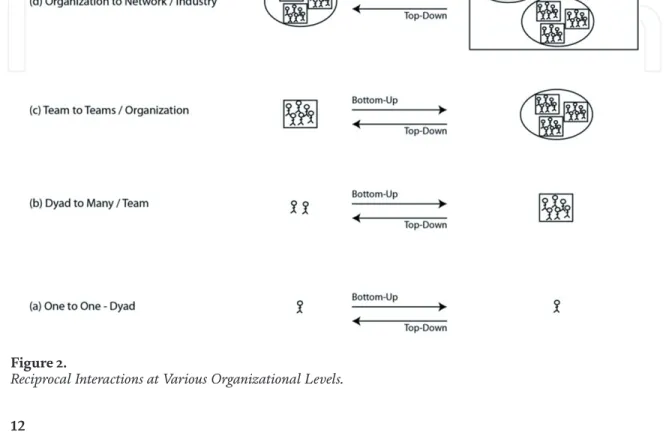
The role of leadership
Meaning-making results in the collection of individual accounts [44], which is part of the CATS model. The CATS model provides the collective leadership that is needed by seeing the team as the leader in the TELDE model [6].
CATS model in context
- Organizational learning, learning organization
- Organizational change
- Collective cognitive structures
- Innovation
- Cross-business-unit collaborations
Further research is needed to test the CATS model to determine its impact on organizational change and organizational interdependence. When these cross-functional teams operate across different companies or industries, they operate similarly to the CATS model.
Summary
New strategic management and planning mechanisms in complex adaptive systems - The case of the UK Best Value initiative. The Spanish publishing industry is among the most powerful in Europe, being one of the most internationally recognized [14].
Structure of the Spanish publishing sector
The main objective of this chapter is to analyze the effects of technological changes in the Spanish publishing industry and see how it adapts to the new digital environment. Source: own elaboration based on data published in Panorama of the Spanish edition (Ministry of Culture and Observatory of the Book in Spain).
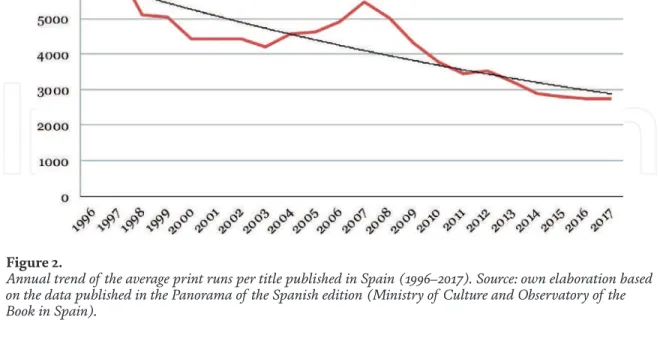
Qualitative changes in the Spanish publishing sector
- e-Book
- Publishing on demand
According to the same report, more than 77% of audiobooks available in Spanish are fiction versus 23%. Although turnover via e-books continues to increase, this does not represent more than 5% of the total turnover of Spanish publishers [40].
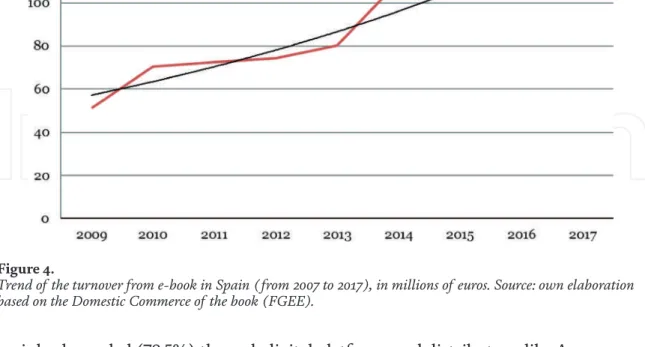
New business models in the Spanish publishing industry
Crowdfunding in the publishing industry opens up its business models to customers and creates a value proposition with them [64]. In Spain, there are at least two relevant crowdfunding platforms in the book world: Libros.com and Pentian.com.
Conclusions
4] China • The highest score goes to transformational leadership style, followed by the transactional leadership style, and the lowest score is the laissez-faire leadership style. 16] Slovenia • The influence of both transformational and transactional leadership styles is strong and positive towards all four constructs (information gathering, distribution, interpretation and organizational memory) of the organizational learning process.
Conceptualization of digital leadership
This book chapter therefore fills a gap in the research literature by embracing benefits associated with digital leadership as an approach in implementing e-learning and other digital strategies in South African universities in this era of the Fourth Industrial Revolution. Digital leadership is in cahoots with themes central to the concept of leadership, as well as other leadership styles, that influence employees to achieve organizational goals.
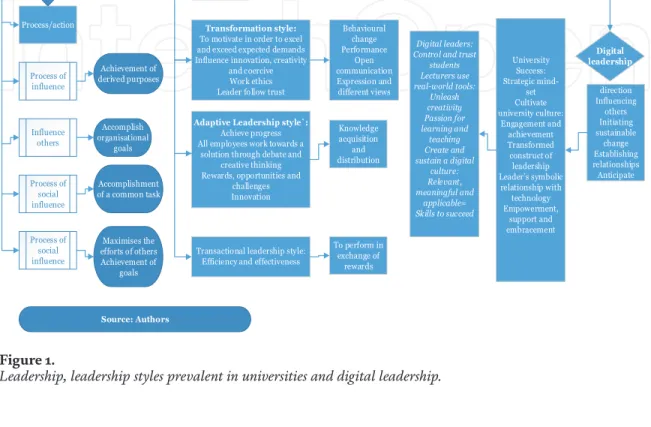
The fourth industrial revolution and university digitalization
Digitalizing campuses: the triggers
Digital technologies and leadership in universities
Emerging trends in digital leadership
Effects of digital leadership in universities
Social media as a powerful digital tool has an opportunity and potential to change, transform and reshape the path of a university leader. In addition, emerging digital tools and trends and social media platforms need to be baked into leadership development programs and practices.
Benefits and risks of digital leadership 1 Benefits of digital leadership
The latest South African Social Media Landscape Report 2018 has shared the latest local figures for the largest social media platforms in the country for 2016-2017. Leadership overcoming the fear of the unknown, misinformation and misunderstanding of the use of technology, including social media and digital devices.
Barriers and risks of digital leadership
The majority of the academic staff members are digitally illiterate in terms of knowledge, skills and competences. For the most part, the staff members do not use technology, including social media, for the benefit of the university and its customers.
Conclusions
Such failure is associated with a lack of digitally oriented strategic vision, university skills, commitment and buy-in from various stakeholders to implement new technologies effectively, efficiently and economically. This situation is aggravated by the lack of clarity of the vision of the effect of the digital age by the main parties mentioned above and their failure to respond to the specific needs of the university.
